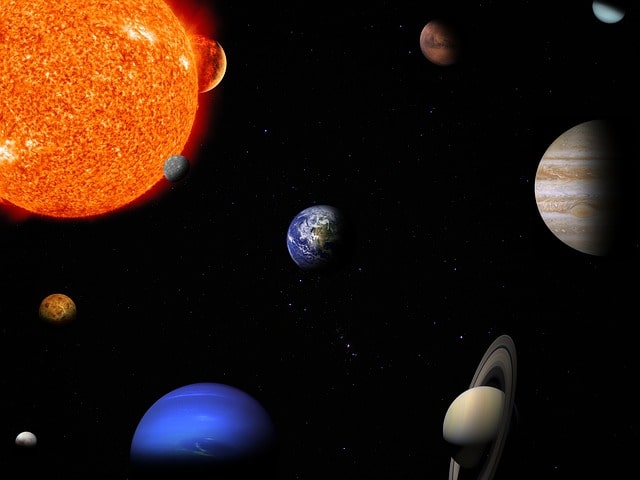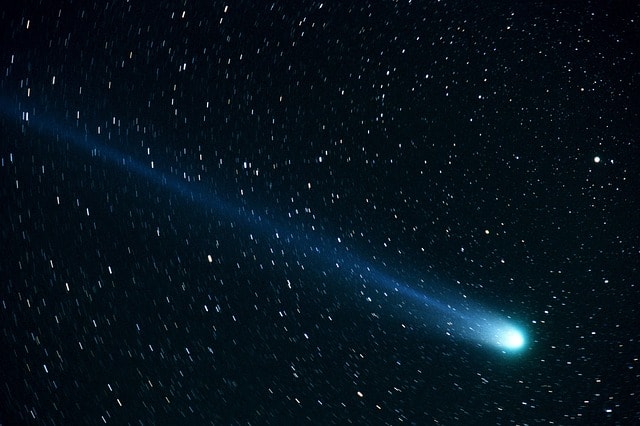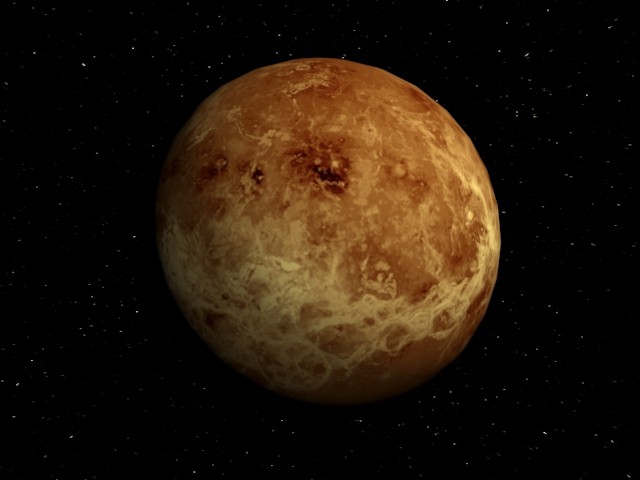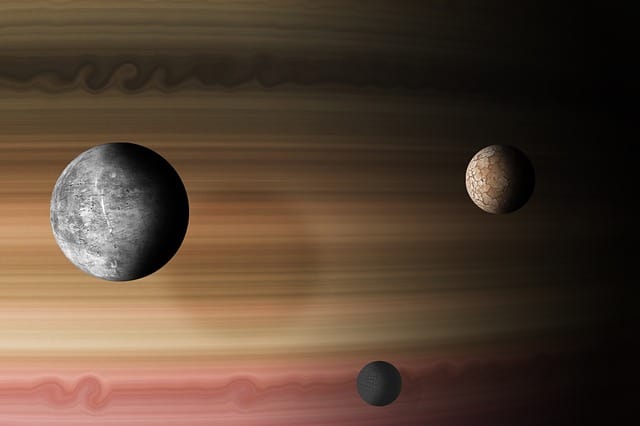35 Impressive Facts About the Planet Mercury

Mercury is the smallest of all the planets in the solar system. It’s also the nearest planet to the Earth. Mercury is even smaller than some moons in the solar system. Despite the fact that Mercury has been observed my humans for over 2000 years, little is known about it compared to other planets in the solar system. Since its closer to the sun, it cannot be seen easily. It can only be easily seen during the twilight of sunrise and sunset. However, when it’s able to be seen, it shines brightly. Despite being the smallest planet, Mercury has some pretty interesting planet profile. Here are 35 impressive facts about the planet Mercury:
Fact 1. On Planet Earth, one year is equivalent to 365 days. On Mercury, one year consists of 88 days. In addition, one solar day on Mercury is equivalent to 176 Earth days.
Fact 2. Mercury has the second core after earth in the entire solar system. Mercury’s core is entirely molten and encompasses molten iron. The iron content available in the core of Mercury surpasses any iron content on any other planet in the solar system.
Fact 3. The sun rays hitting mercury are seven times stronger than the sun rays hitting Earth.
Fact 4. The earth’s magnetic field is stronger than mercury, by far. In fact, Mercury’s magnetic field is just 1% of the Earth’s. However, when MESSENGER was launched to Mercury back in 2004, it revealed some astounding facts, which implies that one million years ago, Mercury’s magnetic field might have been more stronger, maybe as strong as the earth’s magnetic field.
Fact 5. Since Mercury is so close to the sun, many think that its temperature is very hot. The truth is Mercury’s temperature varies considerably during day and night. Day temperature may hit 427 degrees Celsius. Night temperature can plummet to -173 degrees Celsius. So if you are looking to travel to Mercury, your summer and winter clothes should come in handy.
Fact 6. Mercury is relatively small (about 4,878 km wide), which means it’s slightly bigger than the Earth’s moon.
Fact 7. The Hubble Space Telescope (HST), a powerful device used to identify distance and almost invisible planets and solar systems, has never attempted to observe Mercury, and may not be directed to do so. Why? Because Mercury is too close to the sun, and any attempt to do so would result in damage to the optics and electronics due to light.
Fact 8. Before Mercury became the smallest planet, Pluto used to carry the tag. However, Pluto was scratched out of the list of the planets in the solar system.
Fact 9. Humans knew Planet Mercury since the last 5,000 years. Sumerians linked the planet with their god of writing known as Nabu.
Fact 10. As opposed to Earth, Mercury lacks an atmosphere; thus, it can’t absorb and keep any heat from the sun. This explains why the temperature of mercury can plummet to -170 degrees Celsius (- 275) degrees Fahrenheit.
Fact 11. Mercury records the highest temperature swing than any other planet in the solar system. In one day, Mercury can register temperature swing of over 600 degrees Celsius or 1, 100 degrees Fahrenheit.
Fact 12. Since Mercury has no atmosphere, asteroids coming on the planet strike it without any resistance. The result: formation of large craters. An example of a crater resulting from asteroid impact 4 billion years ago is the Caloris Basin. The 100 km wide asteroid that caused the impact is believed to have hit Mercury with a force similar to that produced by one trillion bombs of one megaton each.
Fact 13. The gravitational force on Earth is way stronger than that on Mercury. This means if you’re 100 kg right now, you would weigh 38 kg on Mercury.
Fact 14. The Caloris Basin created 4 billion years ago by a massive asteroid impact is about 155 kilometers (960 miles) wide and can swallow up the whole Texas Estate.
Fact 15. While Earth boasts the densest planet in the solar system, Mercury is just on its tail. In fact’s the second densest planet, featuring a metallic core ranging between 2,200 and 2,400 miles (3,600 and 3,800 kilometers).
Fact 16. Contrary to the belief that Mercury lacked its own magnetic field, Marine 10, discovered that Mercury did, in fact, have its own magnetic field.
Fact 17. Mercury consists of a tail. Scientists discovered that Planet Mercury glides with a long comet- like tail behind it. The tail is composed of sodium atoms and is continually pushed off by the extreme pressure coming from the sun’s radiation.
Fact 18. It was earlier thought that Mercury’s surface is smooth. However, the November 1973 mission, when Marine 10 spacecraft passed near Mercury, revealed contrasting images. Mercury’s surface actually has so many craters to the point that it became the most cratered planet in the solar system.
Fact 19. Mercury orbits the sun in 88 Earth days. It orbits the sun at an average speed of 112,000 miles per hour (180,000 kilometres per hour). This makes Mercury the fastest planet in the solar system.
Fact 20. Mercury and Venus are the only planets without moon in the entire solar system. This is due to their lack of atmosphere and rings.
Fact 21. One Mercury day is equivalent to 59 Earth days.
Fact 22. Ancient people believed the existence of two distinct planets, instead of one Mercury. This belief was informed by the sight of Mercury twice a day; in the morning and in the evening. They just did’t realize that they were witnessing the same planet twice. Mercury orbits the sun very fast, which is why it’s seen twice a day.
Fact 23. Mercury is only seen when crossing the earth’s surface. This phenomenon is referred to as transit, and it occurs only after every seven years.
Fact 24. Our ancestors knew Mercury long before other planets in the solar system. Records show that Sumerians knew Mercury from 3000 BC.
Fact 25. Mercury is not characterized by any seasons because its axis has the smallest tilt compared to other planets in the solar system.
Fact 26. Astronomers believe that Mercury craters contain ice. Mercury’s north and south poles are shadowy and cold, which could let them hold back water ice. Astronomers also theorize that comets and meteorites could have transported ice and dumped in those areas or water vapur coming from the interiors of Mercury could have leaked out and frozen.
Fact 27. Scientists speculate that the smooth appearance of Mercury’s northern plains may be due to volcanic activity. The part could have been covered with dried lava, smoothing it out as it flows, although there is no sign of volcanic activity on the surface of Mercury today.
Fact 28. Like other planets, Mercury spins anticlockwise (west to east) when observed from its north pole. Mercury’s axis tends to be perfectly vertical, as opposed to the Earth’s axis, which is tilted at 23.5 degrees. Mercury radar observations indicate that it revolves just once every 58.65 days.
Due to this, just 3 rotations of Mercury takes place every two of its years, a relationship commonly known as a 3:2 spin-orbit resonance. This phenomenon is believed to be caused by the difference in the pull of the gravity of the sun on Mercury as the planet drifts closer and farther in its own orbit. This effect is referred to as solid body tidal forces.
Fact 29. Saturn’s moon called Titan and Jupiter’s moon called Ganymede are both larger than planet Mercury.
Fact 30. The most tilted and elongated orbit of all the planet’s orbits is Mercury’s.
Fact 31. Small planets typically have solid nuclei. However, because of the presence of sulphur, mercury’s core is liquid.
Fact 32. Copernicus was the first human to notice orbiting Mercury in the 16th century. Galileo was the first human to observe this planet during the 17th century.
Fact 33. Mercury’s thin atmosphere is made up of oxygen (42%), sodium (29%), hydrogen (22%), helium (6%) and other components make up the remaining 1 percentage.
Fact 34. Mercury is named after the messenger of the Roman gods, who is also known as Hermes in Greek mythology.
Fact 35. Mercury’s proximity to the Sun and speed relative to the Earth makes it difficult planet to visit. As such, only 2 spacecrafts (Mariner 10 and Messenger) have ever visited Mercury.






